Site Information: This habitat in the city of Gresham has full sun, part sun, shade, dry, and moist soil.

What inspired you to enroll in the Backyard Habitat Certification Program?
In the last few years, I’ve developed a real love for native plants. At first, I wanted to incorporate them into a manicured garden setting because many of them can be pretty showy. Then I found that less manicured, denser, more diverse, and slightly messy led to more bugs and more birds. I love all of those things. Now I love wandering around on my little suburban lot looking for surprises. Certification just seemed like the next step.
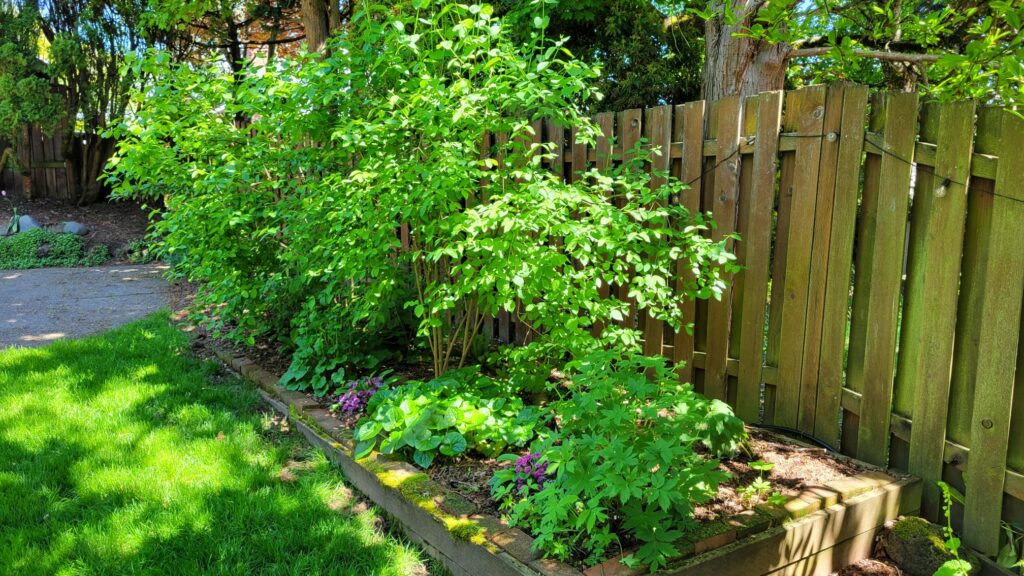
How would you describe your habitat?
I have a small certified rain garden that accommodates roughly half of my roof. The rest of the roof is disconnected and spreads over an area too constrained for a certified rain garden. The front yard is mostly full sun with a few spots of shade/partial shade. I have drip irrigation, but most of the yard is on the dry side in the summer. The front yard used to be sloped grass but now is terraced into two fairly flat levels. The full sun areas are mostly plants for pollinators–the more flowers, the better. There are still some non-natives mixed in, including a flowering cherry and lace-leaf maple. A 15-year-old White oak and a large Doug fir are the biggest shade-providing native trees. The backyard still has a lawn but has beds planted with mostly shade/partial shade natives on three sides. We recently converted part of the lawn that was struggling to a shady woodland assemblage. A couple of plants were taken out and replaced with shrubs that will hopefully survive to qualify for gold certification (pending).
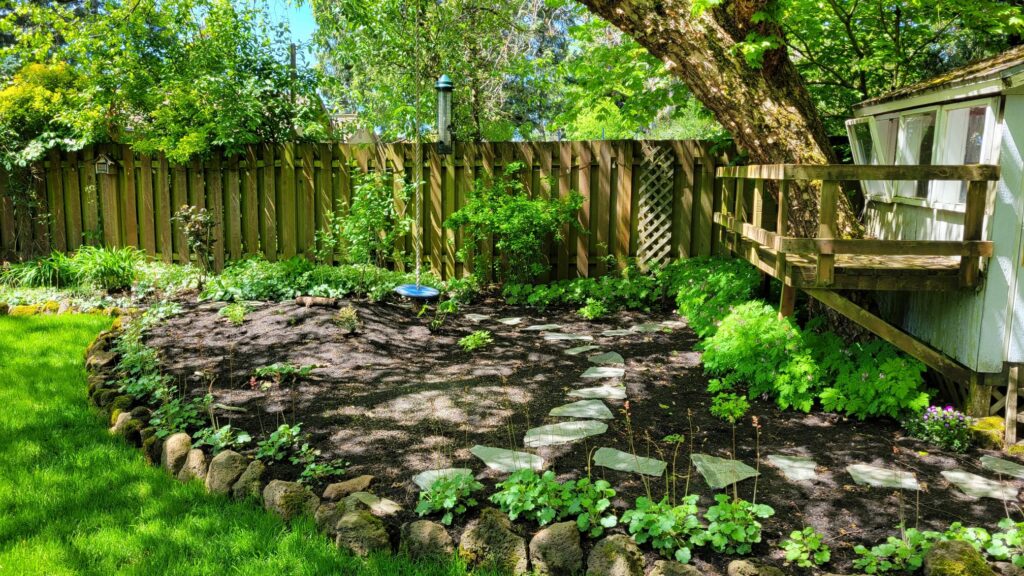
What are your top three favorite native plants, and why do you love them?
1. Mock Orange: They smell good, are beautiful, are the state flower in Idaho, where I grew up, and figured in my mom’s childhood (also growing up in Idaho).
2. Giant Camas: common camas too, but I’ve had a lot more success with giant camas in my yard. They are beautiful (I can’t figure out why they aren’t common in flower gardens) and significant as a food to Native Americans. Seeing large fields of camas is amazing, and it’s nice to have a tiny piece of that in my yard.
3. Madrone: I’ve always loved these trees. Every part and stage of them is beautiful, from the orange bark to the glossy leaves to the flowers. I used to drive to the few nearby madrones just to look at them. Now I have two going in my yard, and my fingers crossed.

What changes have you observed as a result of creating habitat?
I have noticed a greater diversity of insects and birds. Part of the increase in birds is attributable to my bird feeder, but hummingbirds come for the red-flowering currants, penstemons, and others. I haven’t managed to lure in frogs, but I don’t have a lot to work with in terms of open water. I also have received a number of comments from neighbors walking past the house about the interest provided by the wilder yard that still somehow is more than a vacant lot.
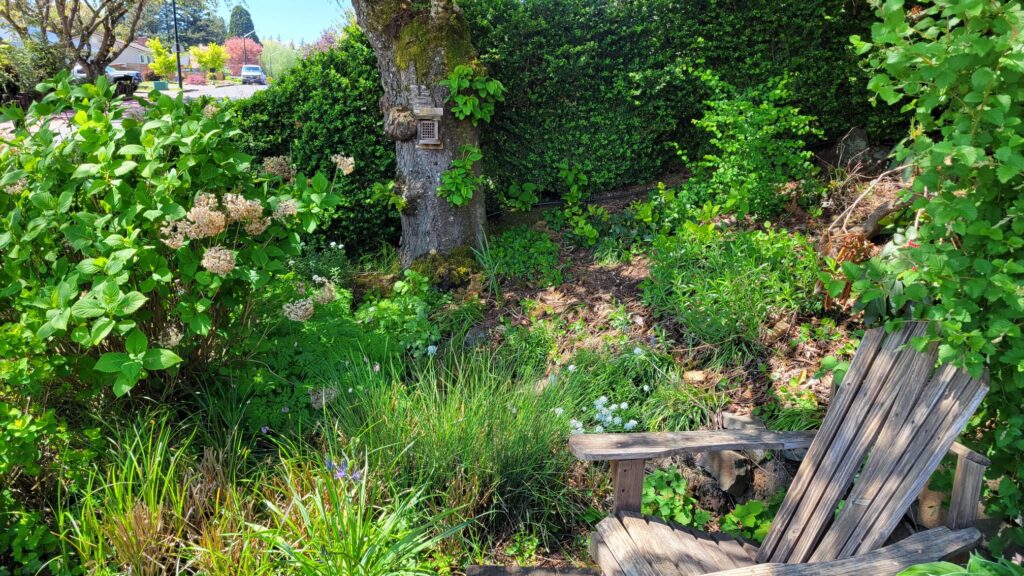
What were the two most significant challenges you encountered while creating habitat, and how did you address them?
My biggest challenge has been water. I installed a drip system for the native beds, and that helped a lot, but the more you plant, the more heads you need, and in one corner of the yard, the water pressure is spread too thin. I’ve lost a few plants.
The second biggest struggle is non-native grass that spreads underground and enmeshes itself with the roots of native plants. So far, all I can do is pull it and knock it back. It returns after a couple of weeks. At least I don’t have to fight with some of the worst invasives.
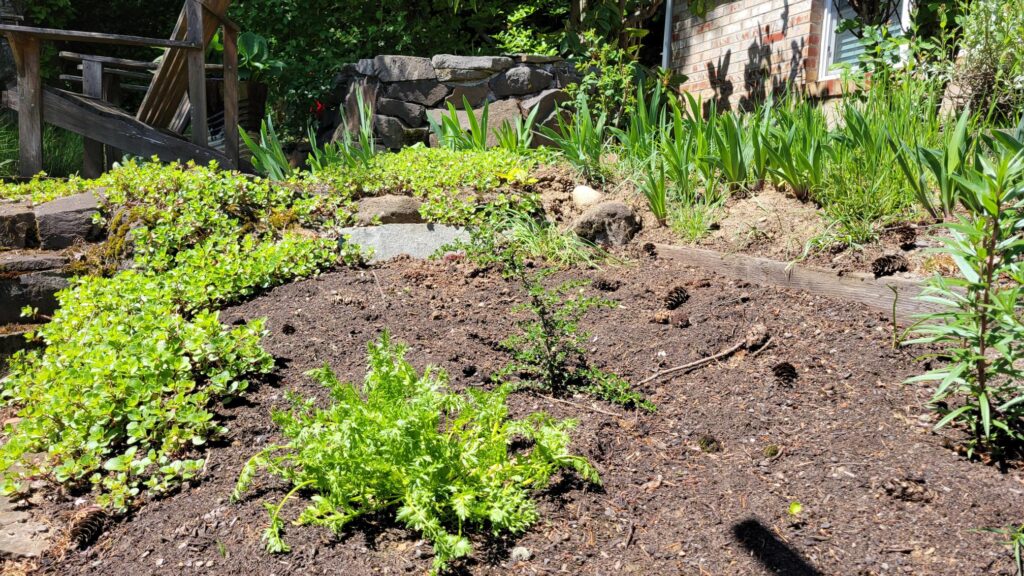
What resources did you find especially helpful?
The EMSWCD plant swap and the Friends of Backyard Habitats Facebook group have been very, very helpful.
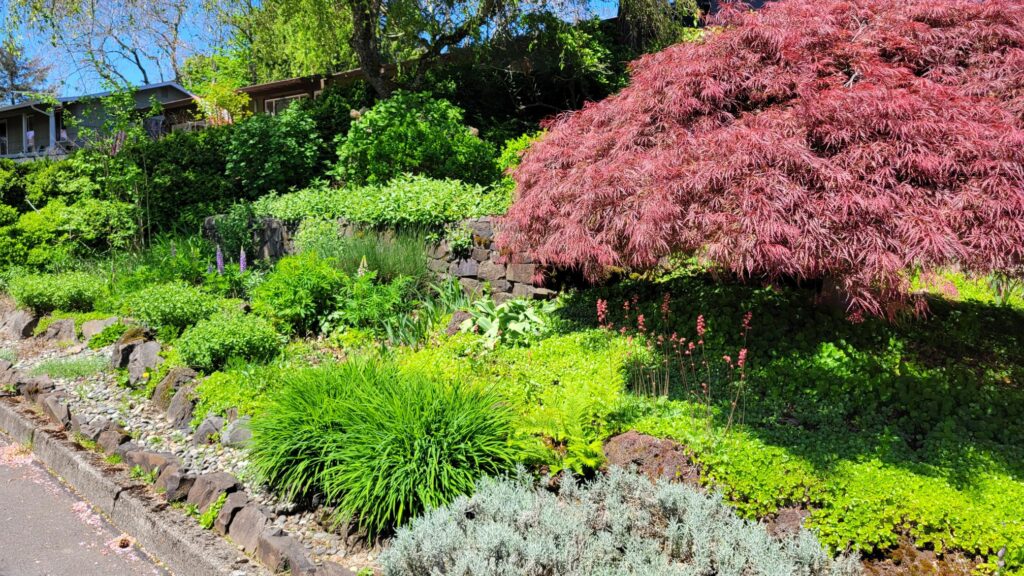
How do you enjoy your Backyard Habitat throughout the different seasons? What are its highlights in each season?
Spring is my favorite season in my yard. I have more flowers blooming than any other time. There is also the anticipation of what is going to spring up where. In the summer, the interest shifts to the pollinators. I have a lot of Douglas aster that attracts a large variety of native bees, flies, and beetles. Unfortunately, butterflies seem to limited to white cabbage and tiger swallowtails, but I like ’em. Fall is all about the colors of the birchleaf spirea and vine maple, but the bird diversity also picks up with migrants. I’m hoping a few recent additions will start contributing more berries. In winter, the highlight is the rain garden, watching it fill and then slowly drain with each rainstorm. It still has never overflowed.
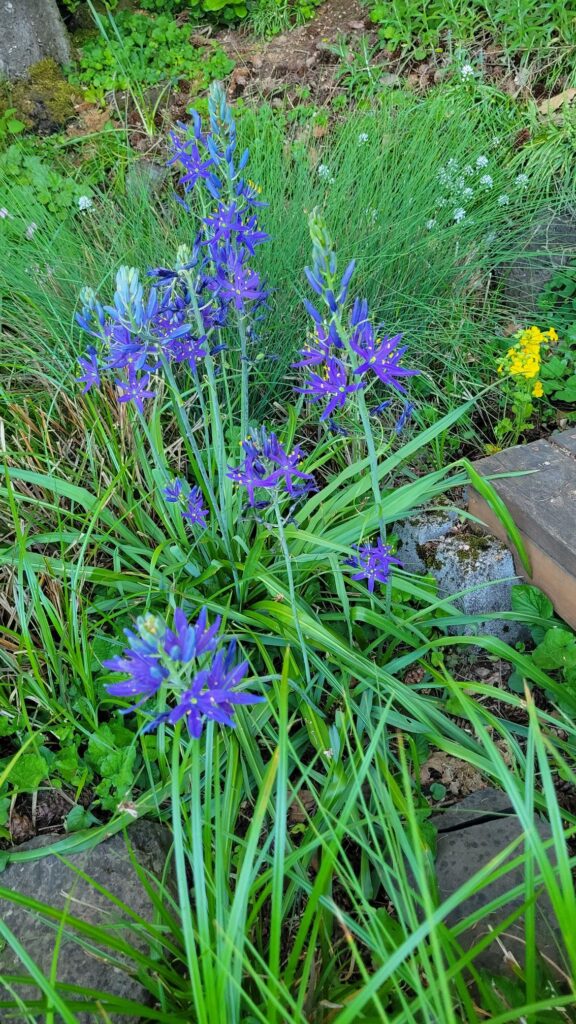
What part of your backyard habitat are you most proud of?
I’m proud of the rain garden and its combination of functionality and beauty. I built a deck over part of it so we didn’t lose space for sitting in the garden (it was a small brick patio before).
What part of your backyard habitat are you most proud of?
Entering the certification process has definitely focused my efforts. The results I can hope for (in terms of wildlife species) seem to be limited by how far I am from natural areas.